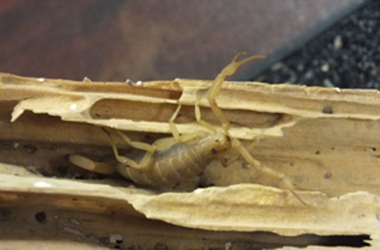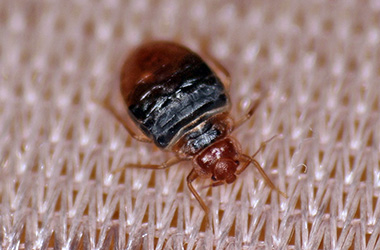
One of the most infamous of pests, the scorpion is one of the most difficult to eliminate. They spend most of their time tucked away in cracks or crevices and are even found in children’s sand boxes.
In the past month, many residents in Las Vegas, Nevada, noticed small scorpions in their homes, specifically in beds, shoes, garages and near pets’ water bowls. Local ABC affiliate KSNV-TV reported that the number of the pests has increased over the past year, along with reports of sightings in and near homes. Although the creatures can be common in deserts, they are also found in many environments across the world.
When scorpions appear
Spring and fall are the mating seasons for scorpions, at which point they may be more frequently seen. The bark scorpion, which has been spotted the most as of late, is considered life threatening, although reports of stings far outweigh fatalities. While this species is native to Arizona, California and New Mexico, the FDA notes that their numbers have been increasing in Clark County, Nevada. Bark scorpions most often grow to be a little more than an inch long, but can grow to over three inches. To discover whether or not there is an infestation, the Arizona-Sonoma Desert Museum suggests waiting until nightfall and shining a black light into dark spaces and across floors and ceilings. Under a black light, their exoskeletons will have a distinct glow.
Children under five are at risk for more serious sting side effects, which the Mayo Clinic notes as including severe pain, convulsions, drooling, sweating and occasionally inconsolable crying. They are more likely to require intensive treatment. After being stung, adults frequently experience rapid breathing, high blood pressure, increased heart rate, muscle twitching, and weakness, according to the healthcare provider. If the stung victim is an adolescent or younger, or elderly, of a low body weight or is experiencing high levels of pain, he or she is recommended to see a doctor, regardless of symptoms. Scorpions also sting pets, so if they are exhibiting strange behavior that might be indicative of a sting, a trip to the veterinarian may be in order.
Preventative measures
Reduce the likelihood of the dangerous pest by eliminating standing water as much as possible and by sealing potential entryways. The most commonly stung areas on the body are hands and feet, so it’s best to be aware of those extremities when making the bed, putting on shoes and reaching for items. Closets, cabinets and other enclosed spaces ought to be inspected frequently in areas where scorpions are common (Nevada, Arizona, New Mexico and California). Scorpions typically hide during the day and travel at night, so inspections should be conducted after sunset with a black light if possible.
Keeping the area surrounding a home free of brush, firewood and debris will help keep the pests away. The aforementioned should be kept at a distance of 30 feet or more. Most species like to hide under rocks and other things outside, and under clothes and shoes indoors. Leaks from pipes, humidifiers or air conditioners should be repaired as soon as possible, since scorpions are attracted to warm, wet places. It is also advisable to contact an exterminator to handle the infestation rather then attempting to exterminate the scorpions independently.

One of the most infamous of pests, the scorpion is one of the most difficult to eliminate. They spend most of their time tucked away in cracks or crevices and are even found in children’s sand boxes.

What does the ever-changing weather patterns have to do with pest control? Quite a bit, actually.

In the past month, many residents in Las Vegas, Nevada, noticed small scorpions in their homes, specifically in beds, shoes, garages and near pets’ water bowls.